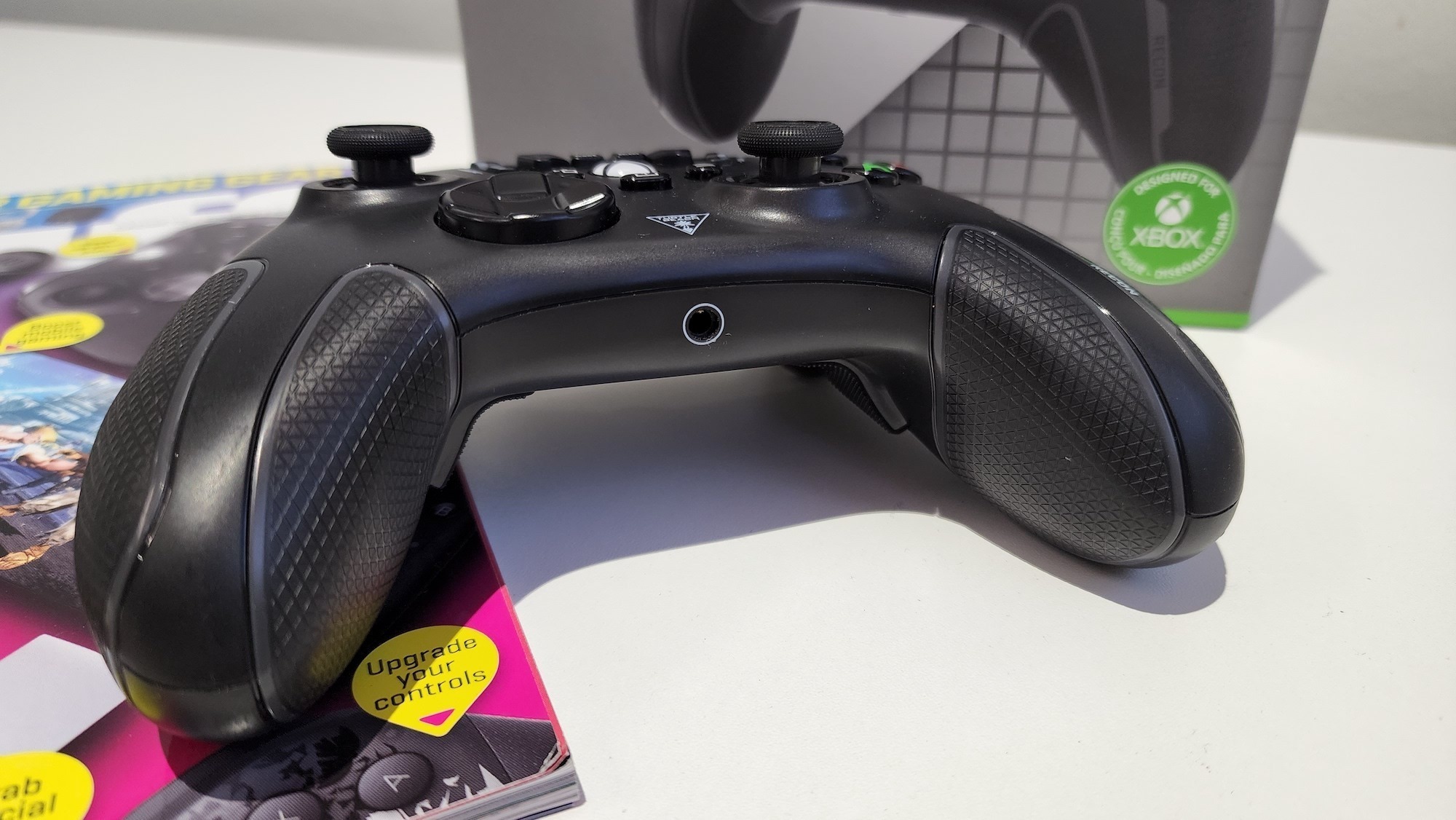It might be a little divisive but we didn't like the way Turtle Beach built its controller. Lightweight materials replace solid construction in a way we found unpleasant. But if you're a multiplayer gamer, or just less picky, you'll find that the additional features make up for it. If you don't need the audio tweaks, though, look elsewhere.
-
Price
-
Features
-
Design
-
Build
Turtle Beach is a name we associate most closely with gaming headphones. Products like its Recon controller show that the brand has its place in other areas. If you’re looking for a second controller, are keen on audio features, and don’t mind being connected to your Series X, this one’s for you.
The Turtle Beach Recon controller is designed for use with the Xbox Series X but it’ll work just as well with the Xbox One and PC. A little bit of versatility never hurt anyone. And we suspect this controller’s USB connector lets it get around a touch more than is advertised. If you’re persistent.
Light as a feather, stiff as a board
Pop open the box and you’re greeted by the controller, a three-metre length of braided cable, and an instruction booklet. That’s about it. Okay, there may be a few stickers inside too. Since this is a wired controller, the cable is non-optional. The USB side plugs into your console (or PC), and the USB-C connecter fits into the back of the Recon itself.
The Recon controller’s button layout closely matches the stock Series X peripheral. There’s a slight difference in that there are more buttons. You’ll find a cluster of them above the Xbox Home button and a pair of extra triggers underneath the controller. These all set Turtle Beach’s hardware apart from Microsoft’s physically superior gaming input device.
Didn’t we mention that? The Recon is made from lightweight plastic. It’s noticeably lighter than a vanilla Microsoft controller, but it also feels less premium. Some players are going to like this. Some are not. We fell into the latter camp. The triggers and shoulder buttons here, while textured and non-slip, feel cheap compared to a stock controller. The shoulder buttons in particular didn’t feel as responsive as they should have.
Listen here, you little…

There’s a reason for the decline in weight and heft, of course. Part of it is that the controller doesn’t have batteries or the bits that make it wireless. The other part is that the Recon is made from cheaper materials. But it’s also supposed to be used for longer gaming sessions. Some people prefer to avoid wrist fatigue. Apparently that’s a thing. Long story short, Turtle Beach saved a bunch of space inside its Recon. It opted to fill some of it with audio tech.
The 3.5mm jack is prominent. So are the volume controls on the controller’s upper sections. Then there are four EQ profiles that offer various preset balance options to users who might be using a budget headset. Turtle Beach has also included something called Superhuman Hearing. That’s with a ™, so you know the company is serious about it. This feature, when activated, amplifies the sort of thing you need to hear in multiplayer games, like footsteps, reloads, and other environmental clues. It’s not worth a damn if you’re the sort to blast Cypress Hill while pumping close-range shotgun blasts into the opposition. If that’s you, you’re probably not reading this review. The controller doesn’t have the correct herbal design language, for one.
Headshot hotshot
 And then there’s the final serious feature. Those two rear buttons can be configured, letting you improve response times in FPS matches. How you lay the buttons out is up to you, but it’s possible to map basically any two standard buttons to the back of the Recon. But you might not want to go all the way there.
And then there’s the final serious feature. Those two rear buttons can be configured, letting you improve response times in FPS matches. How you lay the buttons out is up to you, but it’s possible to map basically any two standard buttons to the back of the Recon. But you might not want to go all the way there.
A feature called Pro-Aim is activated by the right-hand programmable button. Keeping it there, especially if you play FPS games, is a definite plan. Pro-Aim lets players define one of four different levels of sensitivity to the right-hand thumbstick. Once defined, pressing the right rear button slows down the stick’s sensitivity to the desired level. It won’t give you bullet-time in games, but it does allow much finer control of aimed shots in a firefight. Release that trigger and you can scamper off to your next kill instead of moving like you’re coated in honey.
The downside to these extras, besides our build objections, is that they’re finicky to set up. If you’re thinking of playing online frequently — maybe you’re a Fortnite nut — it’s worth taking the time to set up. But it will take time, and experimentation, to select and set up a configuration that works for you. It’ll reward the investment, but for casual players, this isn’t the best choice of equipment.
Turtle Beach Recon Controller (wired) verdict

Turtle Beach’s controller, at R1,300, is only about R100 cheaper than an authentic Series X controller. If you’re in search of more headshots, configurable buttons, and interesting audio trickery, you won’t be disappointed. If build quality is right near the top of your list of must-haves, spend the extra hundred bucks and get the real thing. Microsoft’s stock controller might be less capable than the Recon but it’s definitely physically superior. In other words, if you’re all about your single-player games, skip this one. Nothing of interest lies inside. But if you’re looking to up your K/D ratio while mocking your foes clearly and concisely, the Turtle Beach Recon should do the job.






